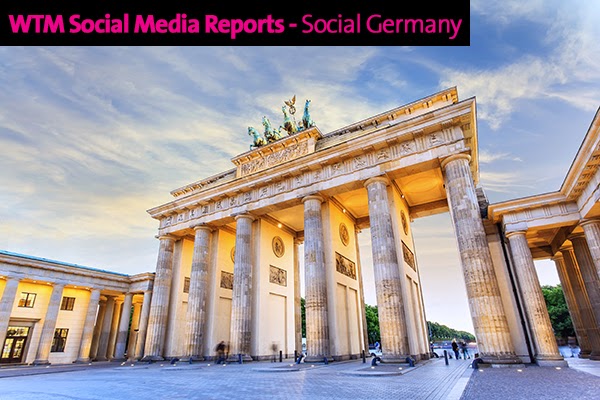By the end of 2015, Germany is expected to have the largest number of social media users in western Europe, overtaking the UK in the process, according to eMarketeer.
Penetration is high, with XING – the German equivalent of LinkedIN – enjoying high popularity, along with Facebook and Instagram. Although curiously, the adoption of Twitter is relatively low.
The social population is young and hungry, particularly in the old eastern Germany, under Soviet rule until as recently as 1989.
There are plenty of stories to be shared. And, as with other socially-aware and progressive tourist boards (DMOs) such as Ireland and Scotland, Germany has worked out how to identify its own stories – and to tell them well.
The main ‘story’ this year has been #germany25reunified – the 25th anniversary of The Fall of the Wall is on November 9 – with multi-platform content, including a video series and related Instagram photo competition.
The German National Tourist Office (GNTO) also worked this year on a tangential storyline to highlight all 39 World Heritage sites in the country – all visited by a blogger within 30 days, by rail.
They are powerful narratives, with a purpose. As William Bakker, chief strategist at social media consultancy Think!, would say: “Self-determination is key for defining how you want visitors to see a place.”
Defining the narrative is a key, and an approach that is now ingrained in the GNTO’s approach to social. Work out who you are, what you want – and plan ahead.
Last year, in its first big campaign, the focus was on the young traveller. Technology had allowed free wifi to be installed at various points across several cities.
The GNTO devised a #youthhotspotsgermany campaign, then created an interactive website and mobile phone app which allowed people to share their tips.
Then they hired the British blogger Kash Bhattacharya to get the ball rolling. For two months in the spring of 2013, he visited 14 hotspots across Germany “starting a conversation about the hashtag” by sharing tweets, photos and audio clips.
“I focussed on a variety of things, from nightlife, street food, a bit of culture, cool places to stay on a budget… I also created bunch of content for the Youth HotSpots microsite and hijacked the GNTO Instagram account,” he says.
Then, for three months of the summer, he blogged on his own Budget Traveller site about the hotspots he had visited and created a 48-hour guide to each city. The blog content was then wrapped into PDF guides and shared via the GNTO website. The guides had 52,000 views (and he created a Storify to showcase other figures.)
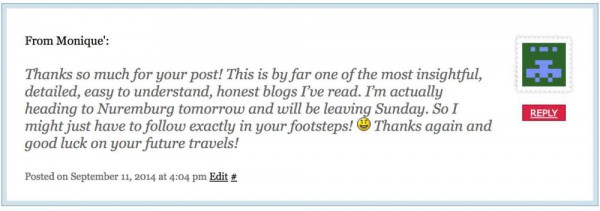
Says Bhattacharya: “It was one of the most enjoyable blogger campaigns I’ve worked on. I had complete trust from the GNTO to create my own itinerary, and the content that I felt would work for the campaign, and I was given excellent support from each of the regional tourism boards.”
The GNTO now runs 12 international Facebook pages, with at least four weekly posts as it seeks to build on its social media presence. It works with the German travel blogger co-operative, Reiseblogger Kollektiv, and was instrumental in helping blogger marketing group iAmbassador stage its first summit, in Leipzig, in spring, 2014.
Says iAmbassador chief operating officer and German blogger Melvin Bocher: “Hosting the Social Travel Summit was a huge value for the destination Germany. Having 50 of the worldwide top travel bloggers create a massive exposure via the different social channels, reaching over four million accounts with more than 94m opportunities-to-see, just via Twitter.”
There’s a clear strategy to work with (and pay) bloggers to visit and push out content on their own channels, and well as on GNTO and partner sites. It will usually be part of a paid marketing campaign, with a dedicated microsite, app and offline activities – and clear commercial aspirations.
One such project was ‘Time Travel By Train‘ a joint venture with the GNTO, Deutsche Bahn and Australian blogger, Michael Turtle, who this summer visited all 39 World Heritage Sites using DB’s rail network.
“The aim was to post at least one photo/description from each World Heritage Site, plus one post from each accommodation provider (Youth Hostels of Germany), and fun updates about other things that happened along the journey. There were also several promotional social media posts pointing to offers from the partners,” says Turtle.
He posted 120 social media posts on each of Twitter, Facebook, G+ and Instagram: there were more than 500,000 direct views of the content. (Twitter: 35%, Facebook: 25%, Google+:30%, Instagram: 10%)
In addition, Turtle provided photos to the partners to use on their own social media channels. He also ‘took over’ the Instagram account of @GermanyTravel for a week. During that week, the Instagram account had more than 2,000 likes and gained more than 300 new followers.
“Overall, it was considered to be an extremely successful project,” he says. “One of the reasons for this success was the planning beforehand and the cooperation available within a paid marketing campaign.
“The project also resonated with followers because of the intense narrative within a set timeframe. The social media campaign was also just part of a larger project to produce content for the website of each of the main partners.”
[tabs][tab title =”Bloggers and social plans for 2015″]
Bloggers and social plans for 2015
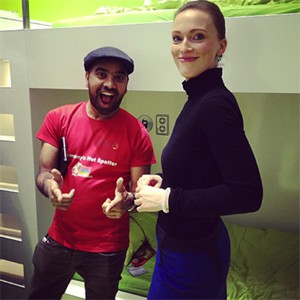
The German National Tourist Office (GNTO) tends to have one main theme to promote a year. The Head of Social Media, Catharina Fischer, reveals to WTM how bloggers and social feed into the online marketing mix…
The GNTO’s main theme in 2015 will be ‘Traditions and Customs.’ What do you consider them to be? Culinary, living and arts/crafts are the three main categories and with which we try (for example, with the support of bloggers) to promote Germany. Most of the well-known attractions, events or things you have in mind when thinking about Germany can fit in one of these categories. They also fit perfectly for each state.
Is it a campaign devised specifically for bloggers? No, it is an image campaign. With most of our campaigns (themes) we try to improve the image of Germany as a travel destination even further and want to put it in the relevant set of the customers. I think that is not new. What is new is how we incorporate bloggers within our social media marketing during such a campaign – which we see as a part of online marketing. It also depends on what you’d like to get out of it. For example, traffic to your website/campaign website, content in different languages and/or quality or engagement on your social media channels. The content plays an especially important role as it is necessary for us to promote such a theme within one year and to get attention on different channels. Great content is the ‘door opener’ to get people on your website from other external platforms and serves as the source of engagement within your social media channels. When we start such a campaign we do not have a great variety of content in different languages for such a theme: we have general information but that is not sufficient for international marketing and social media. So the blogger can provide great (social) content plus social media marketing via their channels and direct communication to their communities, hence maybe new customers for us.
How many bloggers will be using, and from which markets? We currently work with various bloggers from our main European markets (UK, Spain, France, Austria, Netherlands, Italy, Belgium) and also USA, Brazil and China. All these markets are also relevant when it comes to that theme.
How do you choose individual bloggers from individual markets for separate campaigns? I started our collaboration with bloggers in 2012. Firstly, by attending conferences where I met several bloggers. With our Youth Hotspots campaign in 2013, I increased collaboration with international bloggers and got in contact with them directly. We now have a database, especially because of the Social Travel Summit, which we established with iAmbassador, and the German Reiseblogger Kollektiv. For the tradition theme we had a call-up during the summit and afterwards online. Over 300 bloggers registered and we selected them. Now our markets are in contact with selected bloggers and they will work on the tours and topics with them.
I believe the GNTO has a policy of paying bloggers? How much, on average, do you think fair? We have. But it is difficult to say what is fair or not. It always depends on the work the blogger is doing and the produced content. If corporate content, high professional content, is needed and produced specially for a campaign, so for example pictures or a video or ebook, than we pay for it. We also have to pay for it if we would get it from an agency. But with the bloggers we have personal content, we have trust, we have social media engagement on top. Apart from that, costs are lower. We see it not as a press relation thing we see it as a new way to produce content and to communicate with the traveler. Costs are around €400 per day, or for a video around €800-1000. Special productions are more. So see that as a rough indication.
Do you think one main campaign a year is sufficient, or maybe two or three? And do you like to keep campaigns running for more than a year? Each year we have one main topic where we put the focus on, and which we put at first within our worldwide marketing. That does not mean that we have only this one campaign. We have several smaller market-specific ones and other themes which we try to incorporate, or which we handle separately on a smaller scale. I do think that it is important to focus, especially when it comes to online marketing and hence social media. If we bundle our capacities and budgets on one theme we do have a significant chance to get awareness in one year and to entice people.
Have you set targets for the Traditions and Customs campaign? What are they, and how do you measure that ROI? Of course. We have targets for our website (traffic) and for our social media channels (engagement) and for each blogger project from each market. Also engagement figures and traffic related numbers. We split them down for each market and we measure them through our analytic tools and watch them the whole year.[/tab]
[tab title =”Bloggers working with the travel industry”]
Working with the travel industry

The Reiseblogger Kollektiv is a group of seven German travel bloggers who got together in 2012. One of the founders is Angelika Schwaff. She told us how it all started…
What was the genesis of RK – where did the idea come from?
Founding the collective was a natural thing. The seven of us had been talking for some time and knew each other well. Many have the right background: former journalists, photographers, PRs and TV journalists. We’ve been blogging for some time, had the same attitude towards travel blogging and wanted to collaborate more. Also, we were aware that the German industry was keen to learn more about blogging but had no clue where to start. I set up a meeting and invited all tourism PRs and bloggers I knew. There were many question marks, so it was obvious that there was a need for conversation and education. We founded RK four months later and started the discussion. Also, travel blogging friends and some of us started to create the Reiseblogger Kodex, a guideline for ethics for travel blogging in Germany.
Do you have a constitution, or set of rules for membership? And how many are now members?
From the start, we only have been seven travel bloggers. There are no plans to take on new members, but in many collaborations and jobs we work with more top bloggers outside the collective. There is no set rule within our group, but we do have a mutual understanding and set up some responsibilities, simply to smooth the workflow.
There are many travel bloggers who are not members. How representative do you think RK is of German travel blogging?
There are hundreds of travel bloggers in Germany who are not a member. We are not a union or a club for discussion: the seven of us are working together in co-operation with the travel industry. Our seven members mostly reflect all niches out there in travel blogging that might be representative. But we do not want to speak for other bloggers in general. We tried and still try to bring the German Travel Blogging scene to a higher level of quality, and so far I might say we have been very successful in doing so.
How do you rate overall progress to date? Have your aims changed since you started?
If someone had told me in 2012 where RK would be today, I would have never believed it. Our progress has been breathtaking. From scratch we had press coverage in old media, were advising the industry on how to work with professional bloggers and attending many conferences. Together with colleagues from iAmbassador* we set up our own conference, the Social Travel Summit, held in Leipzig in 2014, which has been a huge success.
Our aim is still the same: to deliver high quality content, to work closely with the industry and get everybody to understand that bloggers are not just another channel for communication. We have proven that relations should be taken seriously and that top bloggers have to be paid. What definitely has changed is that the collective has evolved into a team of content creators for the industry. In this, we are working with numerous big players – not only in Germany.
How do you see RK developing in 2015 – what are the plans?
Already now, we are talking to so many new partners about campaigns and content creation: 2015 will be busy! Again, we will attend and speak at ITB 2015 and also, just like this year, we will team up with our friends and colleagues from iAmbassador into planning The Social Travel Summit 2015. There is a lot of work coming up, but we are looking forward to it.
What have been the benefits for you personally?
Being part of our collective means teamwork, and that’s what I like the most. We have turned into a little family, we trust each other, we meet, laugh and have long but fair discussions about our plans. In my old jobs (spokesperson of Air Berlin then Germanwings), I had a handful of great co-workers with whom I enjoyed a similar working climate. But working with my team in the collective is even better because it is more creative and more intense – although my workload has more than doubled since I left my corporate job. But I am rewarded with the best teamwork ever and of course the chance to see the world.
* Angelika is chief strategy officer of iAmbassadors[/tab]
[tab title =”The blogger’s point of view”]
The blogger’s point of view
 Melvin Böcher created Traveldudes as a website diary when he travelled through Indochina with a friend. Then he started adding travel tips. Now the site is an online travel community with a huge social media following. He is also co-founder of travel consultancy iAmbassadors. He lives in Cologne
Melvin Böcher created Traveldudes as a website diary when he travelled through Indochina with a friend. Then he started adding travel tips. Now the site is an online travel community with a huge social media following. He is also co-founder of travel consultancy iAmbassadors. He lives in Cologne
Is Germany – the National Tourist Office, industry and bloggers – a world leader in how it uses social media to market travel and tourism?
World leader is a strong definition and it’s hard to say who that would be. But the GNTO is for sure in this league. They have worked with travel bloggers for a few years now and have realized that they offer very good exposure and value.
Who are the stars of the German travel industry? Lufthansa, maybe?
From my personal experience, I wouldn’t see Lufthansa there. I think they also closed their social/online media office and included it into the press office. Other airlines increase their social teams big time, instead of making them smaller. But I like what the rail company, Deutsche Bahn, is doing and how they are set up.
How influential is Xing? And why don’t Germans like Twitter so much?
Xing is as popular as LinkedIn is in the US. So if you are looking for business contacts, this is the network to be on. Twitter is getting much more popular now. Facebook also needed a few years longer in Germany, compared to other markets. But if you turn on the TV, you will see that traditional media include tweets all the time, even in the news. There are TV shows who realized that they can use this very direct social site and who try to engage with their audience as well via Twitter during live shows. When watching “Tatort” a very popular TV program, you will see hundreds of #Tatort tweets and that traditional media picks up those tweets to create new content.
Give me your favourite example of best GNTO practice recently
They worked with Kash. He travelled through Germany for 42 days and created a lot of quality content for their new Youth Travel website and app. He as well posted on his own blog, on Instagram for both accounts and if I remember right, created as well an ebook. The GNTO understands what a pro blogger offers, is a full time job and needs to get paid.
What sort of campaign would you suggest the to the GNTO?
That would be our Blog Ville concept, which iAmbassadors has run for three years with the Emilia Romagna tourism board, as well the Malta Tourism Authority. That concept gets more out of the blogger’s potential, compared to a press/blog trip. Germany is a very easy country to travel in, and this concept would create really good quality content about Germany on the blogs and the different social media sites.
German travel bloggers as a professional collective: getting there?
There are already a few German travel bloggers who run their blog professionally. There are only a few, but I see those a step ahead compared to other countries. In Germany the rates paid are, in general, higher than in other countries. That helps the German bloggers to run their sites full time. Still I see that most bloggers, also pro bloggers, do not know or realise their true value.
Set yourself a question about social media and travel that I haven’t – but I should have. And then answer it
Do you understand the development of hashtags? When walking around town, reading news, watch TV, you will find advertising, promoting a specific hashtag.
A hashtag is in the end only a keyword, which tells Twitter or other social sites, that a specific word, is a tag/keyword. Would you setup a complete advertising campaign around a tag/keyword of a website? It seems to me that quite a lot of users just use hashtags without a sense of the bigger picture.
It should mainly be used for independent tracking of the success of a campaign. When it then makes more sense, then it’s great, but don’t go nuts with hashtags. The content providers and publishers should think how to better use hashtags. The new Traveldudes version, for example, will be able to give the travel industry far more and free exposure by using hashtags smartly.[/tab][/tabs]
Deutsche Bahn – On track to deliver social customer service
 For many in the travel sector, social media is not just about brand building and marketing, it is about providing customers with real-time customer service. Nowhere is this more relevant than in the world of trains. World Travel Market talks to Svea Rassmus, Head of Team, Social Media Management at Deutsche Bahn.
For many in the travel sector, social media is not just about brand building and marketing, it is about providing customers with real-time customer service. Nowhere is this more relevant than in the world of trains. World Travel Market talks to Svea Rassmus, Head of Team, Social Media Management at Deutsche Bahn.
How big is your social media team at DB?
The social media team of DB Bahn (DB passenger transport) consists of 24 people split up into two teams.
One team works strategically, conceptually and implements new projects which includes marketing campaigns, new communication channels (social media networks, services, owned media), quality control, etc. This team is part of DB Vertrieb (DB Sales) and is based in Frankfurt am Main.
The customer support team is responsible for the operational work/community management and is based in Berlin. They are part of our internal service provider DB Dialog.
Is most of your team’s time spent in answering customer service enquiries, for example when trains are delayed for some reason?
On Facebook and Twitter most of the customer requests refer to products (BahnCard, tickets, mobile services, etc.), train connections, praise and criticism.
Do you need to have a different “tone of voice” (more conversational) from traditional customer service and marketing when answering customers on social media?
The basics (FAQs) for the answers in all customer service channels are the same. They are also the basis of our work, but the social media agents are free to formulate the answers in their own words. For that reason it is a mirrored and emotional response. In some cases, we know the customers very well for a long time and the dialogue is very personal.
You ran a successful campaign called the Boss is Coming in 2011. Have you done other social media campaigns since and how have they worked?
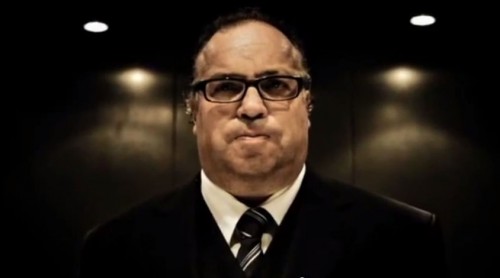
We have about 25 to 28 marketing campaigns every year. Three to five of them are very large and cross-media campaigns. For example, the “BahnCard Gold” campaign during the Olympic Winter Games this year or a coupon campaign for international connections.
Who runs your overseas Facebook pages such as www.facebook.com/DBUKandMore?
The three international Facebook accounts are directly run by our international sales office in London, Paris and Milano. The marketing managers of the countries work as community and social media manager in one person.
They are trained by the social media teams in Germany.
How closely do you work with the rest of DB – e.g. marketing, sales, senior management?
The social media management team works very closely with other departments of DB passenger transport. We are a part of the customer service, marketing and customer communications, etc. Customer engagement and customer satisfaction are key elements of our work. The results and insights (monitoring) of our work we share with the other departments.
Working in the social web generates a large public. The accounts of DB Bahn are a benchmark for many other companies in Germany, and we are proud of that.
Is a large social media presence essential for a transportation provider now?
For good touchpoint management a large social media presence is essential. Our customers want to contact us before, on and after the trip. They use mobile phones, tablets, etc. and they are always online. Our goal is to accompany the costumer on the whole journey.
Putting a XING in Germany’s step
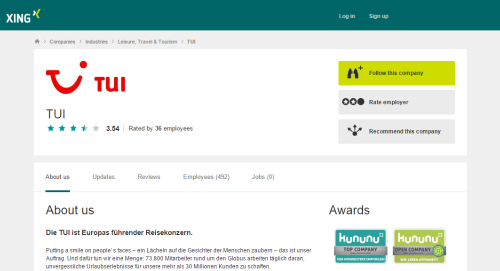 The world back in 2003 was a very different place, at least in terms of social media. There was no Facebook or YouTube and Twitter and Buzzfeed would not appear for a few more years.
The world back in 2003 was a very different place, at least in terms of social media. There was no Facebook or YouTube and Twitter and Buzzfeed would not appear for a few more years.
In Hamburg in August that year, entrepreneur Lars Hinrichs launched an online platform called open Business Club which he promised would “meet the contact management needs of top professionals and will also assist those that aspire to the top of their profession”. It came just a few months after a Santa Monica start-up going by the name of LinkedIN started its own contacts management platform.
By the end of January 2006, openBC had attracted its millionth member and it underwent a redesign, driven by its users. Later that year, it ditched the openBC name for XING and, in December, filed for an initial public offering which valued the company at €161 million.
Now, eight years later, Hinrichs has sold his shares and moved on but XING (usually pronounced ksing or crossing) is one of the main pillars of the German social media landscape. Today, it is used by 7.4 million members in German-speaking countries and around three quarters of the site’s traffic comes from Germany itself.
Like LinkedIN, XING has company pages which allow businesses to promote their products and services and post vacancies. Crucially, it also allows current and former employees to rate what their employer is like to work for. Online review site HolidayCheck is rated as a four-star (out of five) employer by its employees while TUI gets three and a half, for example.
Daniel Cumpsty, founder of specialist IT recruitment company OMNIA, based in Aachen, says, “One of our strategic decisions in starting up OMNIA as a brand was that the LinkedIN had become a war of attrition by recruitment agencies, but that XING was a platform where we could make an impact in a rational and practical way.”
He also feels that while it is helpful to have a profile on XING because many recruiters use it to find candidates, “it is absolutely NOT essential to have one from the perspective of employers”.
“The lead time from finding a candidate on XING to actually receiving a proper CV and then proposing job roles to that candidate is a long one, and this means that employers generally prefer to let recruitment companies continue to do this. Also, XING profiles are generally not detailed enough to become the equivalent of CVs and Germans are far more reluctant to post details (contact details or hobbies etc) on public websites than Brits or Americans,” says Cumpsty.
Cumpsty feels that XING has not yet succumbed to the torrent of often self-serving content that its rival LinkedIN has.
“I personally find XING much more targeted and relevant,” he says. “I find that LinkedIN tends to overload users with articles which generally state the blindingly obvious, but which are mainly intended to raise the profile of the author. XING has all of this too, but in a less cluttered way.”
So why are Germans embracing XING while they tend to embrace others, such as Twitter, much less? He believes there is something in the idea that being built by Germans for German (speakers) has something about it but there is another reason for Xing’s success and Twitter’s slow start.
“Twitter is about news and instant information, and I think that there is a reluctance by the Germans to get bogged down in irrelevant information. It is also a much less spoken language than English, and so the quantity of ‘news’ is that much less. One other thing I would say: the Germans may well adopt all of these tools in due course. I get the feeling that in a few years’ time, Germans will be avid users of Twitter too.”
No such thing as bad virality?
“A loo with a view!” shouted Britain’s Daily Mail.
The loo in question was in the 25hours Hotel Bikini Berlin, which promotes itself as being “as wild as a jungle” on its websites and offering “first-class views of the city and the Berlin Zoo”.
The views for passing pedestrians are quite eye-opening too – you can see right inside the toilets in the hotel’s restaurant thanks to their ceiling to floor glass windows.
After the photos did the inevitable rounds on the internet, the hotel put up a sign in the toilets which read: “Please be careful, not only the monkeys are watching.”, according to the Mail.
The Mail article was shared nearly 4,000 times online, while another one on the Daily Mirror website was tweeted a similar amount. Lots of people have stumbled on the story themselves, sharing the information with their friends.
Which brings me to the question at the top of this article. Is there any such thing as bad virality – a modern variant of the phrase that has been around for at least a century relating to publicity? Do you really care what the message is as long as your brand gets splashed all over the (social) media?
The question has come up a lot recently as marketers have tried to work out how to get their content to “go viral”.
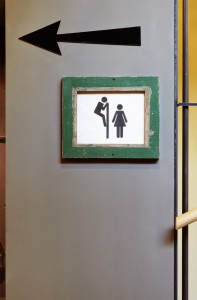
One thing that has gone viral recently is the video below from Scottish travel agent Thorne Travel.
This so-bad-it’s-good video has been shared a huge number of times but cynics have wondered whether the video is pure marketing genius and was planned that way rather than being just bad.
The question is, was the design of the toilets intentional or not. Most of the articles flyng around the net say that is the case but just look at this blog post on the hotel’s sister property in Vienna, which features this sign in the toilets.
Clearly, peeking into toilets is not a new thing for the hotel’s designers and there are plenty of other restaurants, bars, clubs and hotels that like to mix things up when it comes to the toilet arrangements. One I visited a few years ago had frosted glass windows between the gents and the ladies – allowing occupants to see the silhouetted shapes in the other toilet.
So perhaps there is no such thing as bad virality.
Or do we just consider what Irish writer Brendan Behan said? “There’s no bad publicity except an obituary notice.”
Infographic: Social Germany in Numbers


